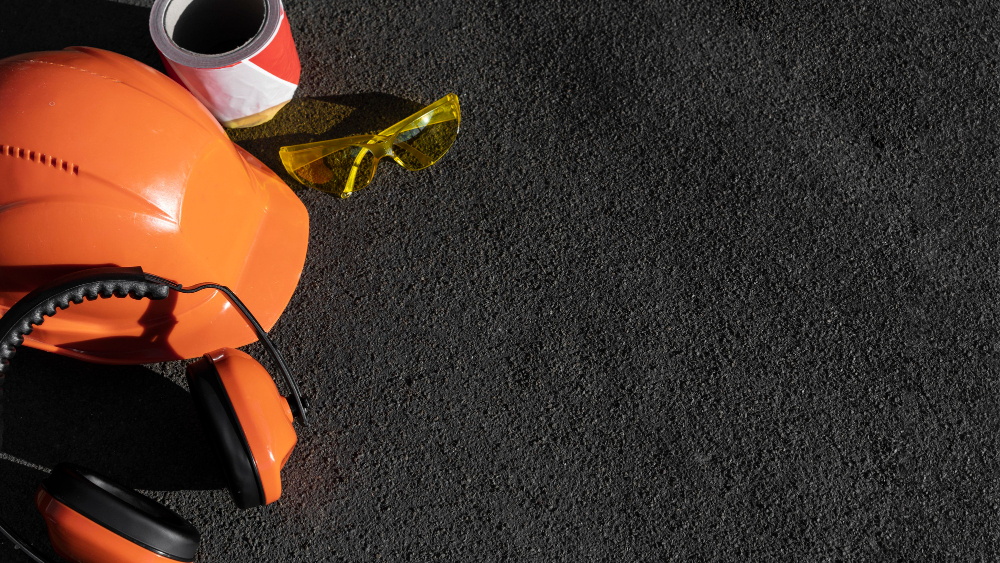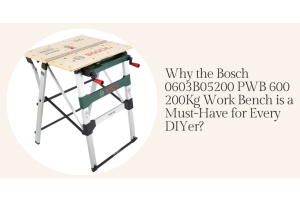10 PPE Must Haves for construction workers

Construction work is one of the most dangerous occupations in the world. Workers are often exposed to various hazards such as falling debris, harmful chemicals, and electrical shocks. Personal Protective Equipment (PPE) is essential for protecting construction workers from these hazards. In this article, we will discuss the 10 PPE must-haves for construction workers and provide additional information on the importance of proper PPE training and avoiding common mistakes.
What is PPE?
Personal Protective Equipment (PPE) or Construction Safety Gear is any equipment or clothing worn by workers to protect them from hazards in the workplace. PPE is essential for construction workers as they are exposed to various hazards that could cause serious injuries or even death. In the construction industry, PPE is a critical component of worker safety, and its use is mandated by OSHA (Occupational Safety and Health Administration).
10 PPE must-haves for Construction Safety
Construction workers face a variety of hazards on the job site, making Personal Protective Equipment (PPE) essential for their safety. Here are the 10 PPE must-haves for construction workers:
Head Protection
Head injuries are common in the construction industry, which is why head protection is a critical piece of PPE. The following are types of head protection:
- Hard hats are the most common form of head protection on construction sites. They protect the head from falling debris, electrical hazards, and other hazards.
- Bump caps are a type of head protection designed to protect workers from minor head injuries. They are ideal for workers who work in areas with low-hanging objects or low ceilings.
Eye Protection
Eye injuries are common to construction workers in the industry, which is why eye protection is necessary to protect workers from dust, debris, chemicals, and other hazards that could cause eye injuries. The following are types of eye protection:
- Safety glasses are the most common form of eye protection. They should be worn at all times when working with power tools, machinery, and any other work that could create debris or flying particles.
- Goggles are designed to provide more complete eye protection than safety glasses. They can be used in situations where safety glasses are not sufficient, such as when working with chemicals or when there is a risk of splashing or spraying.
Hearing Protection
Construction worker safety is of utmost importance. More often than not, they are exposed to loud noises from heavy machinery, power tools, and other equipment. This exposure can lead to hearing loss and other hearing-related problems. The following are types of hearing protection:
- Earplugs are small devices that are inserted into the ear canal. They are the most common form of hearing protection and are ideal for workers who are exposed to loud noise on a regular basis.
- Earmuffs are designed to cover the entire ear and provide more complete hearing protection than earplugs. They can be used in situations where earplugs are not sufficient, such as when working with extremely loud equipment.
Body Protection
Workers are vulnerable to hazards that can cause injury to the body. Body protection is necessary to protect workers from these hazards. The following are types of body protection:
- Vests are lightweight and designed to be worn over clothing. They are ideal for workers who need to be visible on the job site.
- Jackets and coveralls provide more complete body protection than vests. They can be used in situations where workers need protection from chemicals, debris, and other hazards.
Hand Protection
Hands are often exposed to hazards in the construction industry, including cuts, punctures, and chemical exposure. The following are types of hand protection:
- Gloves are the most common form of hand protection and should be worn when working with machinery, sharp objects, or chemicals. The type of glove required will depend on the specific task and the hazards involved.
- Cut-resistant gloves are designed to provide protection against cuts and punctures. They are ideal for workers who work with sharp objects or machinery.
Foot Protection
Feet are also exposed to hazards in the construction industry, including falling objects, sharp objects, and electrical hazards. The following are types of foot protection:
- Steel-toed boots are the most common form of foot protection and are required on construction sites. They provide protection from falling objects and sharp objects and can also protect against electrical hazards
- Metatarsal boots are designed to provide protection for the top of the foot and the toes. They are ideal for workers who work with heavy objects or machinery.
High-Visibility Wear
High-visibility wear is essential for workers who work in areas where visibility is limited. The following are types of high-visibility wear:
- Vests are the most common form of high-visibility wear. They are lightweight and designed to be worn over clothing.
- Jackets provide more complete body coverage than vests and are ideal for workers who need to be visible in low-light conditions.
Fall Protection
Falls are a leading cause of injury and death in the construction industry. The following are types of fall protection:
- Harnesses are designed to secure workers who are working at heights. They are connected to a lifeline that can prevent a fall from occurring.
- Lifelines are used in conjunction with harnesses to prevent falls. They are connected to an anchor point and can prevent a worker from falling in the event of a slip or trip.
- Guardrails are used to prevent falls on elevated work platforms or scaffolds. They provide a physical barrier that prevents workers from falling.
Rescue Tools
Rescue tools are essential for workers who are involved in rescue operations. The following are types of rescue tools:
- Ropes are used to lower workers to safety in the event of an emergency.
- Harnesses are used to secure workers who are being lowered to safety.
- Pulleys are used to create a mechanical advantage that makes it easier to lower workers to safety.
Emergency Kit
Having an emergency kit on the construction site is critical in case of an emergency. The emergency kit should contain first aid supplies, water, food, and other essential items that may be needed in case of an emergency.Construction workers face a range of hazards on the job site, making Personal Protective Equipment (PPE) essential for their safety. By using the right type of PPE, workers can protect themselves from injury and even death. Employers should provide training to workers on the proper use of PPE and ensure that the equipment is properly maintained. By following these guidelines, employers can ensure the safety of their workers and prevent accidents and injuries on construction sites. You can find the right supplier and pool that houses the highest quality of Construction worker safety gear and construction worker safety equipment. Get the job done right with FEPY.
Finding the Right Construction Safety Equipment for the Job
It is important to select the right construction worker safety gear for specific tasks. Different tasks may require different types of safety equipment. It is important to consider the hazards involved in the task and select the appropriate safety equipment to protect workers from these hazards. Employers should provide training to workers on the proper use of safety equipment and ensure that the equipment is properly maintained.
Training for PPE Usage
Proper training is essential for the effective use of construction worker safety equipment. Workers should receive training on the proper use of PPE and should be familiar with the hazards associated with their job. Employers should provide PPE training to workers and ensure that the training is ongoing to ensure that workers are properly equipped and prepared for their tasks.
Common Mistakes to Avoid
Construction worker safety gear is essential to avoid common mistakes that can lead to serious injuries. They may fail to wear construction worker safety equipment, wear PPE incorrectly, or use damaged PPE. It is important to avoid these mistakes and ensure that PPE is properly used. Employers should provide training to workers on the proper use of PPE and should ensure that PPE is properly maintained.
Conclusion
PPE is essential for protecting construction workers from the hazards they face on the job. The 10 PPE must-haves for construction workers include head protection, eye protection, hearing protection, body protection, hand protection, foot protection, high-visibility wear, fall protection, rescue tools, and an emergency kit. Proper training and the avoidance of common mistakes are also critical for the effective use of PPE. By following these guidelines, employers can ensure the safety of their workers and prevent accidents and injuries on construction sites.
FAQs:
Q: What are some of the most important pieces of safety equipment?
A: Hard hats, safety glasses, and earplugs are some of the most important pieces of safety equipment as they protect the head, eyes, and ears from common hazards on the job site.
Q: What is the main objective of safety equipment?
A: The main objective of safety equipment is to protect workers from hazards and prevent accidents and injuries in the workplace.
Q: Why is safety equipment used in work areas?
A: Safety equipment is used in work areas to protect workers from hazards that can cause injury or illness and ensure their safety while on the job.
Q: Why do we need safety tools and equipment?
A: We need safety tools and equipment to protect workers from hazards and prevent accidents and injuries in the workplace, which can result in lost time, productivity, and even loss of life.
Q: What hazards can PPE protect from?
A: PPE can protect workers from hazards such as falling objects, chemicals, electricity, noise, and other hazards that can cause injury or illness.
Q: What is hearing protection?
A: Hearing protection is a type of PPE that is used to protect workers from exposure to loud noises, which can cause hearing loss and other hearing-related problems.
Q: What type of PPE can protect a worker from electrocution?
A: PPE such as rubber gloves, boots, and mats can protect workers from electrocution by providing insulation against electrical current.
Q: What situations require the use of PPE?
A: PPE is required in situations where workers are exposed to hazards that can cause injury or illness, such as working at heights, with chemicals, or around heavy machinery.
Q: What PPE is recommended for chemical hazards?
A: PPE such as chemical-resistant gloves, suits, and boots are recommended for workers who are exposed to chemical hazards in the workplace.
Q: What are some different types of hand protection?
A: Different types of hand protection include gloves made of leather, cotton, or synthetic materials, as well as cut-resistant gloves and gloves designed for chemical resistance.
Q: What items are typically included in a PPE kit?
A: A PPE kit typically includes items such as hard hats, safety glasses, earplugs, gloves, boots, and high-visibility vests or jackets, depending on the hazards present in the workplace.




